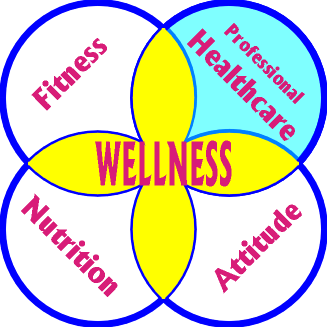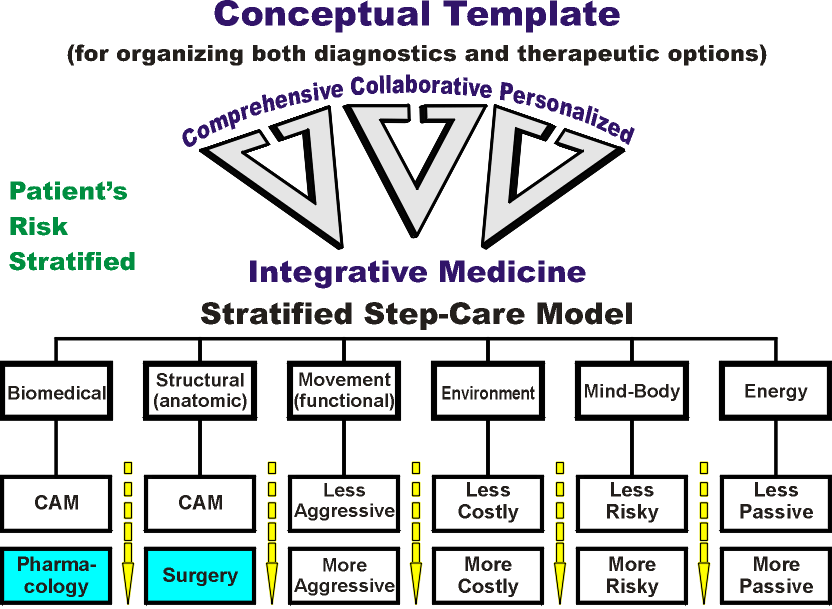
Info@CompWellness.biz
1-302-586-8665*
Email/Call for Health Answers*
Read our CompWellness Blog

System to make your face fresh, young, strong, healthy & more beautiful every day
 Info@CompWellness.biz 1-302-586-8665* Email/Call for Health Answers* Read our CompWellness Blog |
 System to make your face fresh, young, strong, healthy & more beautiful every day |


Wellness eJournal™
21st Century Wellness eLetter™ ..
Complementary Healing eGuide ™ ..
Wellness eJournal™
CompWellness Network Members List .. Resources with Links ..
Products .. CompWellness Home Page
Notices: Disclaimer, Copyright © 1997-2012, CompWellness Network, Fairfield NJ USA, Colorado Non-Profit, Trade Names, Cross-Linkages, Acknowledgments, Additional Resources and Members
Wellness eJournal Articles Listing
Wellness Components – Professional Healthcare:
A Conceptual Template for CAM & Integrative Medicine
– August 31, 2000
by Milton Hammerly, MD

There are many possible ways of classifying the more than three hundred complementary and alternative medicine (CAM) therapies. The most useful method of classification, for purposes of understanding what's available and when it is appropriate to use a given therapy, is based on the presumed mechanism(s) of action of the therapy. By basing a classification theme on mechanisms of action it becomes easier to identify how therapies differ, how they are similar, and when it might be most appropriate to consider using a particular therapy. Using this classification scheme, it becomes apparent that structural therapies are most appropriately used for structural problems, biochemical therapies for biochemical problems, and so on.
A good classification scheme of available therapies – based on mechanism of action – can therefore also become a way of diagnosing, from a comprehensive perspective, what imbalances are causing problems for a particular patient:
Most classification schemes used for complementary and alternative medicine exclude conventional Western medicine and define "integrative medicine" as the combination of Western medicine and CAM. The major problem with this approach is that it still implies a distinction between "us" and "them;" a separation and tension between "this" and "that." In reality, Western medicine fits very nicely in a classification scheme based on mechanisms of action.
Doing surgery is clearly an anatomic/structural intervention. It just happens to be the most aggressive therapy in the structural category. Prescribing a medication (pharmacology) is clearly a biochemical intervention – the most aggressive therapy in the biochemical category. By categorizing all therapies by mechanism of action, it becomes obvious that there are more aggressive and less aggressive therapies in each therapeutic and diagnostic category. Within each category of therapies, it is therefore possible to create a hierarchy based on how aggressive, costly, risky and passive the specific therapies are. The Western medical therapies, in general, tend to be more aggressive, more costly, more risky and more passive.
Complementary therapies, in general, tend to be less aggressive, less costly, less risky and less passive.
Another problem with simply defining integrative medicine as the combination of Western medicine and CAM is that it lacks any clinical rationale as to why or how one might even bother to do this. In other words, there is no philosophical or rational framework provided for why or how integrative medicine deserves to exist. The reason for combining diverse therapeutic approaches is to provide more comprehensive and personalized care. Since no single therapy, specialty or discipline can provide everything needed for comprehensive (body, mind and spirit) care, interdisciplinary collaboration is necessary.
On this basis integrative medicine can be defined as the use of a broad array of therapies to provide more comprehensive, collaborative and personalized health care. Bearing this in mind, the following template provides a conceptual framework for CAM and for integrative medicine.

The beauty of integrative medicine is that it neither forces aggressive therapies on patients when they are not needed, nor withholds aggressive interventions when they are needed. The most important first step is a thorough assessment and triage (or "risk stratification") of the patient. If there is an urgent or emergency situation "Do not pass GO, do not collect $200," go straight to Western medicine. If the situation is more chronic and not dangerous, then it is worth trying less aggressive CAM interventions first and monitoring the outcomes closely. If whatever therapy is chosen does not produce the desired results and the clinical situation is worsening or not improving then it is totally appropriate to step up to more aggressive strategies.
A classic example of this stratified stepped-care model in action would be for a patient with mild to moderate osteoarthritis. The typical Western medicine approach would be to prescribe an anti-inflammatory medication. In many cases this will work well to alleviate symptoms. On the other hand, anti-inflammatory medications can cause liver problems, kidney problems, gastritis and bleeding ulcers. In fact more people die from gastrointestinal bleeding caused by anti-inflammatories in the USA (16,000 - 17,000 deaths per year) than from any other medication complication. If every patient with mild to moderate osteoarthritis were first started on glucosamine sulfate (which appears to be helpful for many patients according to the research) before stepping up to the more aggressive, more risky and more costly use of anti-inflammatories the clinical response would be just as good and potentially thousands of lives could be saved each year!
We are facing a meltdown of the health care system in the United States because we are now spending in excess of 15% of our gross domestic product and costs continue to rise. We spend much more than any other country in the world on health care and yet our health statistics, are (according to the World Health Organization) mediocre when compared with other developed nations. There are countries that spend one tenth as much on health care and yet have better health statistics. How is this possible? One large factor is that we spend our health care dollars unwisely by always favoring the most aggressive, most costly, most risky and most passive therapies. Not only is this dangerous to patients (with deaths from medications estimated as the fourth leading cause of death in the USA, after, heart disease, cancer and strokes), it is a very foolish way to spend limited resources.

Integrative medicine allows for a more rational allocation of resources as well as a more patient-centered approach to health care. The law of diminishing returns, which plays itself out in physiology as much as in economics, recognizes that after a certain point a huge investment or effort results in only a marginal gain or improvement. Before reaching that point of diminishing returns, relatively small investments or efforts yield very big returns.
A physiologic example of this is the out-of-shape person that decides to start training for a 400-meter sprint. The first few months the person might train for 30 minutes three to four times weekly and see dramatic improvements in his or her performance. However, after several months two or more hours of intense daily training will only yield a miniscule difference in performance (even though it may be the difference between being first or last in a race).
In health care, when we automatically jump to the most costly, most aggressive interventions we also jump to the point of diminishing returns where the payback for our efforts is miniscule. If we would not neglect diet, the use of supplements, relaxation therapies, exercise, and a host of simple, non-aggressive complementary therapies we would have much more to show for our efforts.
As the politicians, insurance companies, medical organizations and other special interest groups grapple with legislation and financing strategies to avert the impending health care melt down, the most important questions are not being asked. The most important questions are not, How do we pay for it? or How do we guarantee universal access? The questions that should be asked are, What is good health care? and What is the most rational way to spend our health care dollars? I believe integrative medicine has the answers to these more important questions. More and more people are finding that integrative medicine is the answer to their health care needs. As promising as integrative medicine is in meeting the health care needs of individuals, ultimately its greatest promise is in meeting the health care needs of our society.
Copyright © 2000-2012, CompWellness Network, Fairfield NJ USA, Milton Hammerly, MD, Denver CO from his website's General Public articles. Reprinted with Permission.

After several years of practicing in a variety of conventional medical settings, Dr Milton Hammerly, MD experienced first hand the benefits of using Complementary Therapies in his own life. In 1996 he opened an integrative medicine practice in Denver CO with a team of more than 30 practitioners specializing in everything from Acupuncture through Yoga. Since then he has been very active as a writer and speaker (both in Colorado and nationally) on the topic of rationally integrating Complementary Therapies with Western Medicine. In addition to a maintaining a part-time clinical practice, Milt is currently a contributing editor for Micromedex, an internationally recognized medical database company, and Director of Integrative Medicine for Catholic Health Initiatives, a health care organization with more than 60 hospitals in 22 states. Contact Dr Hammerly by visiting his website, HealingPartner.com.
Please forward this article to Friends and Associates
ONE-CLICK REGISTER for your FREE, monthly 21st Century Wellness eLetter summarizing New eJournal articles and eGuide Chapters
21st Century Wellness eLetter™ .. Complementary Healing eGuide ™ .. Wellness eJournal™
CompWellness Network Members List .. Resources with Links .. Products .. CompWellness Home Page
Notices: Disclaimer, Copyright © 1997-2012, CompWellness Network, Fairfield NJ USA, Colorado Non-Profit, Trade Names, Cross-Linkages, Acknowledgments, Additional Resources and Members
You are wise and generous to visit our Members and Sponsors <<< Click here or the following Sponsors:
Make your face fresh, young, strong, healthy & more beautiful every day ..
Denver's Bio-Cranial/Chiropractic Leader ..
Bio SuperFood Headquarters ..
Save on Amazon's New & Used Consumer Products
Visitors since 5/1/1999.
*Our 1-302-586-8665 health information service is free for the first 5 minutes, then 99 cents per minute on major credit card*
Please report all errors to the CompWellness WebMaster. Thank you.